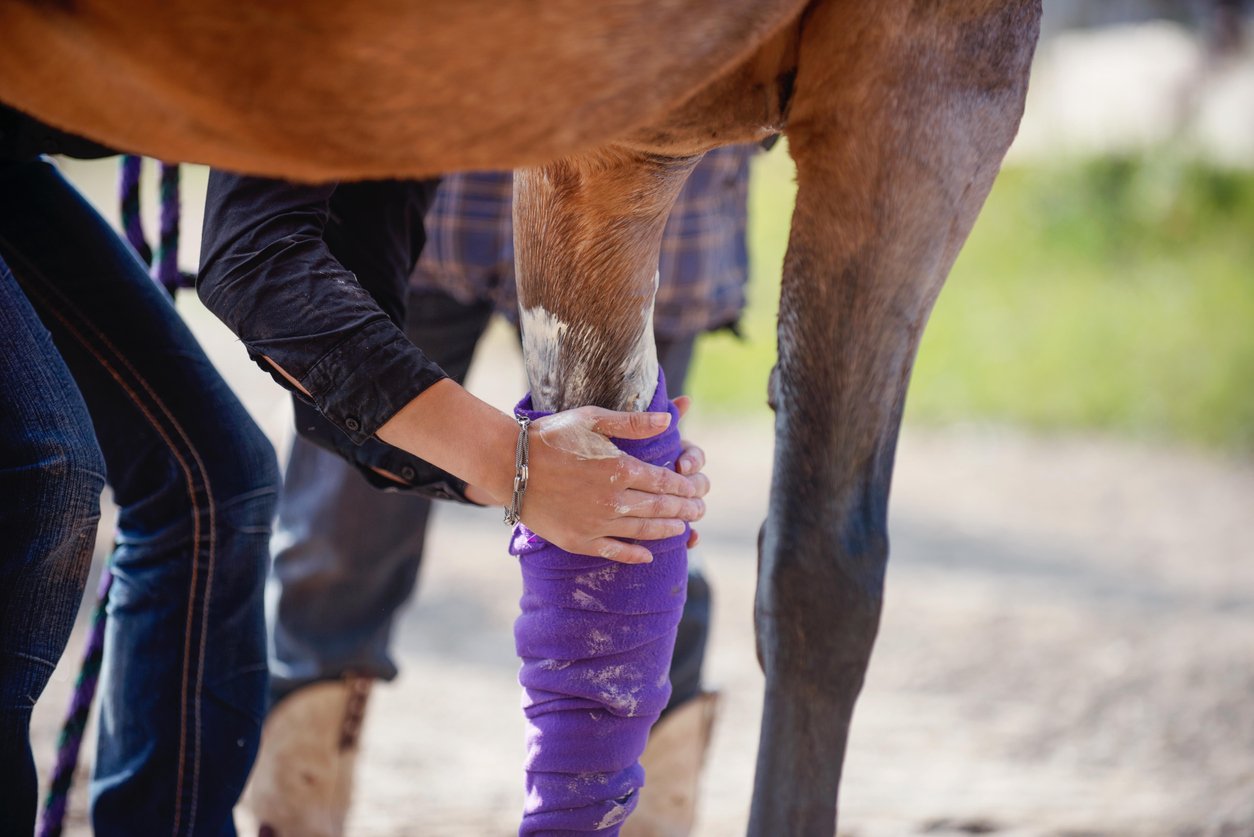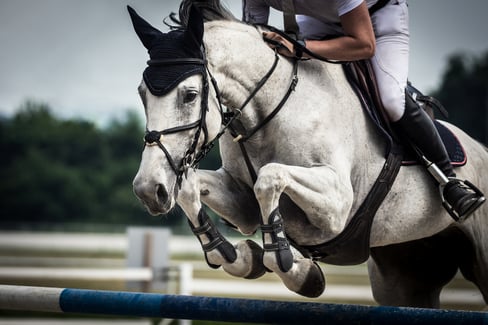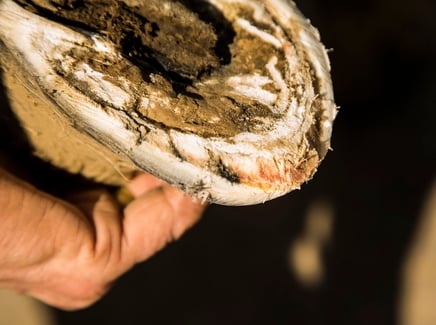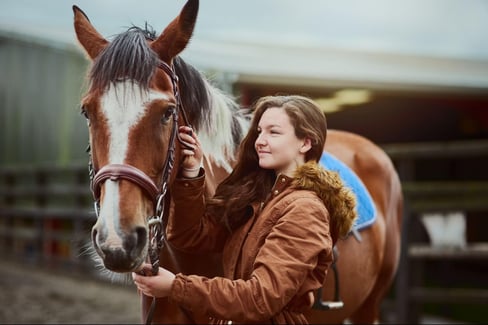Table of Contents
It can be frustrating when your horse is not executing their skills to the best of their ability.
If you want to know, “what does it mean when a horse is lame?” you'll have a tough time pinpointing a definitive answer. Horse lameness is a broad term; according to the American Association of Equine Practitioners, lameness is a change in a horse’s gait.
Lameness in a horse is a very common symptom of various issues affecting the musculoskeletal system, including the bones, muscles, tendons, and ligaments. It can also be a sign of a deeper issue affecting any one of the horse’s organs.
So, if you notice your horse’s walk is a little on the lame side, don’t get overwhelmed; this article will cover some of the most common causes of lame horse and the various treatment options available.
What Is Lameness in a Horse?
Lameness in a horse is the first sign of detecting a much deeper issue. While a slight change in gait might not seem like a major concern, identifying and diagnosing the cause of lame horse can prevent much more serious consequences later on. Identifying the cause of horse lameness can diagnose injuries, infections, illnesses, and chronic conditions.
Though most people assume lameness in a horse is a problem with the feet or legs, lameness can affect any part of the bone and originate in bone or soft tissue.
Most equine veterinarians will grade horse lameness issues on a scale of 0 to 5, 0 being sound or non-lame, and 5 meaning the limb cannot bear any weight.
Equine lameness can be categorized as acute or chronic:
- Acute: Occurs suddenly, often due to injury or trauma, and lasts for less than two weeks
- Chronic: Occurs for a longer period of time than two weeks, often due to a medical condition
Other variables include persistent or intermittent lameness: persistent means the lameness is constant, and intermittent refers to lameness that comes and goes.
Symptoms of a Lame Horse: What to Do / Signs of Horse Lameness Issues
Dealing with such a broad definition, horse lameness could be several issues due to various causes. We often notice lameness due to the noticeable change in our horse’s gait. Identifying the limb causing the lameness, however, can be a challenge.
Below is a list of seven symptoms of equine lameness and the potential reasons for each.
Sudden Lameness in Horse Front Leg
Sudden lameness in a horse’s front leg can be a little scary. If your horse develops sudden lameness in the front leg with no signs of swelling or injury, it is most likely due to a foot abscess or bruise. Often, the hoof wall will feel warm, and you might be able to feel pulses near the pastern.
Other possible causes of sudden lameness in horse front leg include:
- Soft tissue injury
- Bone fracture
- Foreign body
- Infection
Horse Knee Lameness
Also known as carpal lameness, horse knee lameness is characterized by shorter strides, changes in gait, heat, swelling, and tripping in front due to not being able to lift their hoof off the ground properly.
Horse knee lameness is common in performance horses that take excessive weight or concussion to their joints. Jumping, barrel racing, and reining are hard on a horse’s joint and particularly harsh on the knees. However, it doesn’t mean your leisure horse is immune to carpal lameness.
Signs of horse knee lameness include:
- Reduced performance
- Favouring of the limb
- Shortened foreleg stride
- Swelling and inflammation
- Heat around the knee
Horse knee lameness is typically caused by one of the four following issues:
- Conformation faults: The horse’s foreleg does not sit straight on top of the lower leg.
- Excessive concussion: Excessive weight onto the front legs, common in jumper and barrel racers
- Chronic conditions: Arthritis is the most common chronic cause of knee lameness
- Injury: Ligament tears and popped knees
If your horse suffers from knee lameness, your vet may prescribe NSAIDs to reduce the pain and inflammation. Your horse must undergo still rest and potentially icing until the injury starts to recover.
For ongoing knee lameness due to arthritis or chronic conditions, horse joint supplements can help repair cartilage, prevent degeneration, and reduce pain and inflammation. Equine supplements like TRI-ACTA for Equine can be given to your horse daily to help prevent joint issues and knee lameness.
TRI-ACTA for Equine
Providing preventative support for younger horses and helping mitigate the early onset of joint degeneration and other mobility issues.
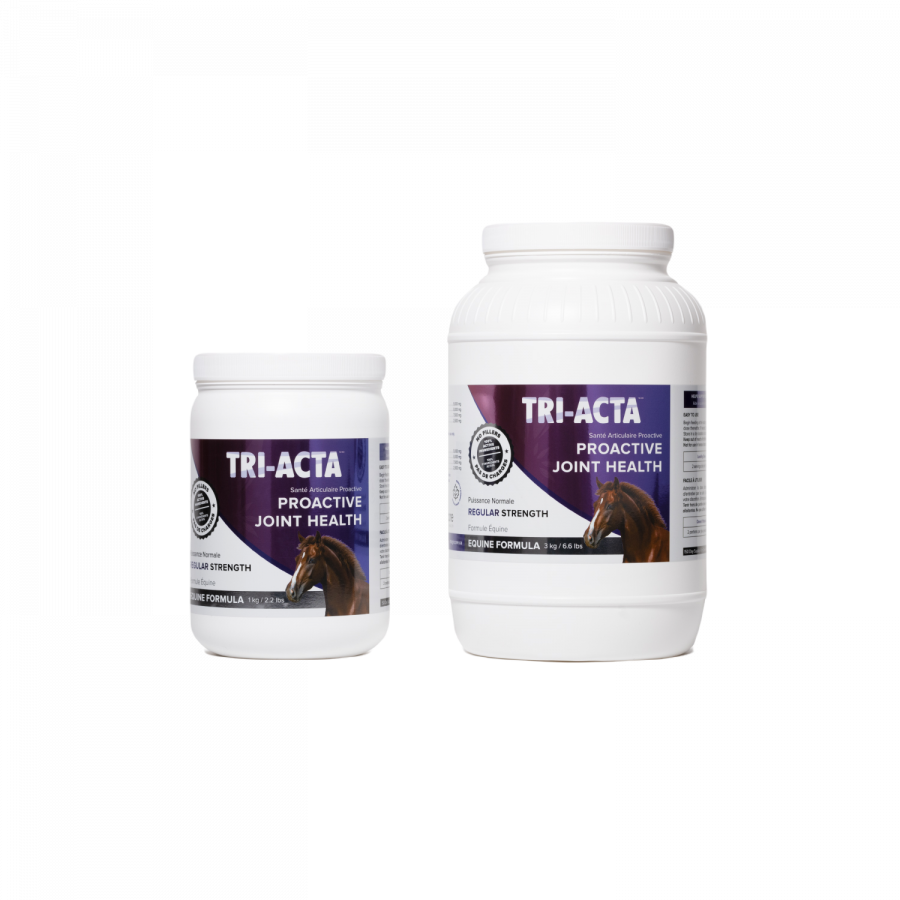
Horses also benefit from maintaining a healthy weight and following a regular exercise program to prevent knee lameness and joint issues. Knee injuries are often a result of overuse, which is why it is important to maintain a balanced conditioning program and allow adequate time to rest between training and performance.
Front Leg Lameness Horse on a Circle
If you’re searching ‘front leg lameness horse on a circle,’ you’ve probably noticed signs of lameness when your horse is turning or performing circular motions instead of walking in a straight line.
Performing circles can be an excellent way of determining lameness on a horse. If you notice a change in your horse’s gait but can’t detect which limb is causing the lameness when they walk in a straight line, perform circles in both directions.
Circles bear more weight on the inside limbs and can accentuate the pressure on the inside front legs. If your horse puts less pressure on their left leg while circling counterclockwise, the lameness affects its left limb. The same goes when doing clockwise circles for the right leg.
Remember these things while performing circles to detect lameness:
- Have a helper walk the horse in circles so you can stand back and observe.
- Walk your horse in circles in a pen or on soft, even ground.
- Walk on a long line of at least 25 feet to allow the horse to walk freely.
- Look for lateral deviation of the hooves or limbs in the opposite direction; it occurs when a horse resists bending a sore limb.
- Your horse may raise their head when they place weight on the sore limb.
If you notice lameness during circles on the outside front leg, there is a chance it could be due to proximal suspensory desmitis. This is an injury to the top part of the suspensory ligament, near or at the insertion of the ligament to the back of the cannon at the top of the leg. It is a fairly common injury in sport-performance horses.
Horse Stifle Lameness
The stifle joint is where the femur meets the tibia in the horse's hind end. It comprises two joints, the femoropatellar joint and the femorotibial joint, and connects four different bones:
-
Patella (kneecap)
-
Femur
-
Fibula
-
Tibula
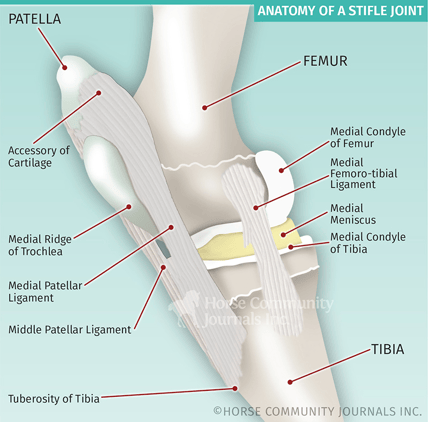
Though it is the largest joint in the horse’s body, it is delicate and tends to be overused. A stifle horse injury often causes lameness.
The stifle horse injury is most common in active horses and occurs during high-intensity activities like racing and jumping. Stifle horse injuries can also happen when a horse has underdeveloped muscles surrounding the joint or a condition that worsens over time.
Symptoms of horse stifle lameness are hard to differentiate from other injuries that cause lameness. However, you may notice leg tenderness and a loss of muscle tone surrounding the stifle joint. To determine a stifle horse injury, your veterinarian may order medical imaging to detect whether or not the injury is in the horse’s stifle joint or another part of the limb.
Horse Foot Lameness
Horse hoof problems are all too common. A study on hoof disorders conducted in the Netherlands found that 85% of horses have at least a mild hoof disorder when examined at their regular hoof trimming.
Horse foot lameness is when a horse has difficulty placing weight on a particular foot. It is diagnosed during an equine lameness exam when a veterinarian conducts hoof testers around the horse’s feet. Using a special instrument, the veterinarian will apply pressure to areas of the horse’s hoof to detect sensitivity or pain.
Improper horseshoeing, poor nutrition, and environmental conditions can all affect the quality of a horse’s hoof, along with infections and other hoof disorders.
Common horse hoof disorders include:
- Hoof abscess
- Thrush
- Lamitis
- Hoof wall cracks
- Bruising
Horse Head Bobbing Lameness
The horse head bobbing lameness is often the first sign of a change in your horse’s gait. Horses bob their heads when they walk or trot to take some pressure and weight off the sore limb with each stride.
Examining the way your horse bobs their heads can determine the sore limb causing the lameness:
- Upward head bobbing lameness: Front limb lameness
- Downward head bobbing lameness: Hind limb lameness
With horse lameness in front leg problems, the head rises when the horse places weight on the affected front limb, and dips when they put weight on the sound limb. If your horse bobs their head down with each stride, the lameness will likely affect one of the hind limbs.
Horse Lameness Shoulder
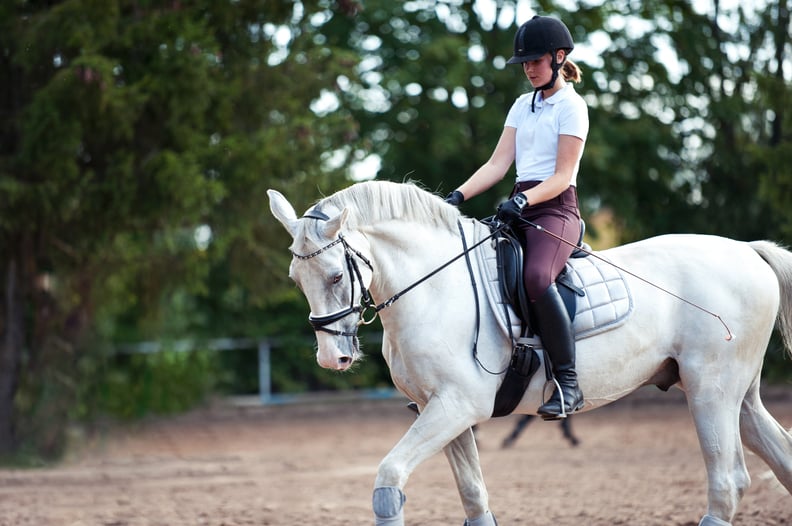
Shoulder lameness in horses is uncommon compared to lameness in the feet and limbs. Horse shoulder lameness is usually due to arthritis or a horse injury directly or indirectly involving the shoulder.
Lameness in the shoulder can be challenging to detect. If your horse has arthritis in the shoulder or a shoulder injury, the lameness will be more present while walking uphill; the forward movement will be shortened, and your horse may move their leg in circular motions to avoid putting pressure on the joint.
Shoulder injuries such as ligament tears and fractures should improve withl adequate stall rest. For arthritis in the shoulder, horse supplements are an effective way to repair and restore cartilage and reduce pain and swelling. Look for a product with hyaluronic acid, like TRI-ACTA H.A. for equine to increase the viscosity of the synovial fluid and improve mobility.
Horse Lameness Causes
There is a long list of reasons and potential causes for your horse showing signs of lameness. Horse lameness causes range from minor injuries to chronic conditions to poor nutrition.
The five most common categories of horse lameness causes are:
- Traumatic injuries
- Degenerative disease
- Hoof-related issues
- Diet-related diseases
- Limb deformities
Traumatic injuries are common in sport-performance horses and leisure horses. These include sprains, strains, fractures, and other injuries to the bones, muscles, tendons, ligaments, and joints injuries. Depending on the type of injury, your horse may need stall rest for two weeks for mild strains and up to a few months for more severe injuries.
Degenerative joint disease (DJD), aka. Osteoarthritis is the most common kind of arthritis in horses; 60% of lameness in horses is related to arthritis. It involves the deterioration of the joints characterized by the loss of cartilage. DJD normally affects the leg or synovial joints, including the hock, fetlock, pastern, coffin, stifle, and knee. It can affect horses of any age; however, it is more common in senior horses or older horses with athletic careers.
Hoof-related issues are a frequent cause of lameness amongst horses; all the time they spend on pastures, in the ring or stall, makes them prone to bacterial and fungal infections. If you notice the presence of heat and swelling in your horse’s hoof, it could be a hoof abscess or thrush. Diseases like laminitis or injuries to the foot can also cause hoof problems.
Diet-related issues caused by poor nutrition and mineral imbalances are often overlooked as potential causes of lameness. If your horse gets too much or too little of certain nutrients, it can impact its gait. For example, calcium deficiencies can cause lameness, particularly in the front limbs.
Limb deformities are less common causes of lameness. They are usually present at birth, but some may result due to a horse injury. Different angular limb deformities include bow legs, knock-knees, or bucked knees. Braces or surgery may be recommended to treat lameness caused by limb deformities.
Diagnosing Horse Lameness
In some cases, a horse owner or rider will be able to determine the cause of lameness by identifying the site of the injury or the cause for concern.
The first step is identifying whether the horse has front leg lameness or hind leg lameness.
The chart below compares the signs of front leg vs hind leg lameness in horses.
| Front Leg Lameness Horse |
Hind Leg Lameness Horse |
|
|
Once you have determined whether your horse has front leg lameness or hind leg lameness, run your hands up and down each of the two limbs; conduct light palpitations to see if the horse shows signs of discomfort when touched.
When conducting the palpitations, look for physical signs of injury, including:
- Swelling
- Heat
- Lacerations
- Bleeding
- Foreign objects stuck in the skin or hoof
If you can’t find an obvious cause of the lameness, such as a cut or abscess, or foreign object stuck in their hoof or skin, call your veterinarian or an equine lameness specialist to perform an equine lameness exam.
An equine lameness exam is comprised of five components:
- History
- Standing exam
- Movement exam
- Flexion exams
- Hoof testing
History
Your veterinarian will conduct a brief background check on your horse, including its age, breed, and prior use. If your leisure horse is an ex-sport performance horse or a competitive bronco, now would be a good time to mention it!
You will also be asked questions about the lameness, such as when it started, the symptoms, how it might have occurred, and the severity of the lameness.
Standing Exam
A standing exam includes a visual examination from a distance, followed by physical palpitations to identify heat, swelling, and pain.
Movement Exam
Next, the movement exam involves evaluating your horse in motion. Most movement exams are done by instructing your horse to trot in a straight line. You may also be asked to lead your horse in circles, up and down inclines, or through specific patterns.
Flexion Exams
The flexion exam component involves putting the joints under light stress for a short amount of time. The limbs are examined before and after the flexion to determine weakness or pain.
Hoof Testing
Hoof testing involves using a pincer-like tool to apply pressure to specific areas of the foot to determine if there is a pain response.
Once your equine lameness specialist has isolated where the pain is located, they can determine the limb or body part causing the lameness. They may instruct further diagnostic tests, including ultrasounds, diagnostic anesthesia, thermography, MRI, CT Scans, and Nuclear Scintigraphy (bone scans).
Treatments of Equine Lameness
Horse lameness treatment plans vary depending on the cause and severity of the lameness. Your veterinarian or equine lameness specialist will recommend one or more of the following treatments:
- Rest
- Controlled exercise
- Non-steroidal anti-inflammatory drugs (NSAIDs)
- Joint supplements
- Horse joint injections
- Surgery
- Alternative therapies
Rest is recommended in all cases of equine lameness. Depending on the injury or condition, your horse may be instructed to stall rest within their stall for a few days to a week for minor injuries or up to six months for severe injuries. In cases of chronic conditions like arthritis, your vet may recommend rest until a suitable treatment improves the horse’s symptoms.
Controlled exercise and rest go hand in hand. While your horse may be instructed to strictly stall rest for the initial recovery, returning to a low-impact exercise routine is essential.
NSAIDs are an effective way to reduce pain and inflammation to prevent an injury from getting worse. For strains and sprains, your vet may recommend stall rest and an NSAID for three to five days to control swelling and prevent a mild injury from becoming more severe.
Joint supplements are a safe and effective measure to take for recovery from injury and long-term conditions. Look for a supplement like TRI-ACTA for Equine with glucosamine chondroitin for horses to repair cartilage and prevent deterioration, along with MSM to reduce pain and inflammation. TRI-ACTA H.A. for Equine contains all three active ingredients mentioned, plus hyaluronic acid to lubricate the joints and promote mobility.
TRI-ACTA H.A. for Equine
Our maximum strength formula is perfect for horses that are ageing, experiencing arthritis and stiffness, are in training and competition, or under a heavy workload.
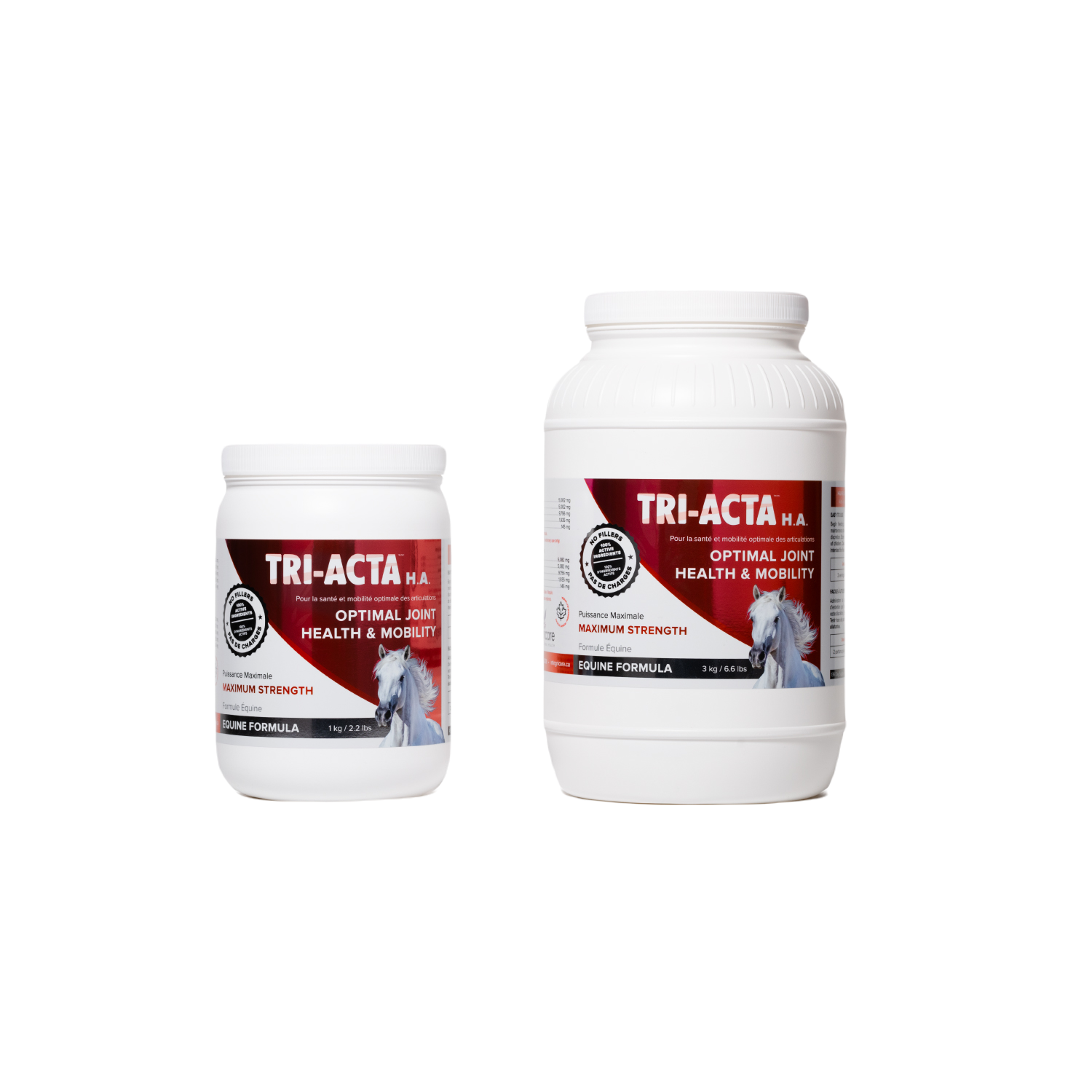
Horse joint injections are a form of treatment that uses a needle to inject a medical substance into an animal's joints to reduce inflammation and aid healing. They are often recommended for injuries or in more severe cases of chronic conditions like arthritis.
Surgery is not usually recommended for lame horses except to fix or reset broken bones or deformities causing the lameness.
Alternative therapies are great options to use in conjunction with other forms of horse lameness treatments. These alternative therapies take a holistic recovery approach, including hydrotherapy, massage therapy, physical therapy, and chiropractic care.
When Should You See an Equine Lameness Specialist?
An equine veterinarian is a doctor of equine medicine and horse health care. Veterinarians are horse doctors trained in all aspects of equine health.
While your regular veterinarian may be able to identify the cause of your lame horse and offer a suitable treatment plan, seeking the expertise of an equine lameness specialist may be recommended. An equine lameness specialist is an expert in diagnosing complex lameness cases and other performance-limiting equine conditions.
You should always consult your veterinarian for sudden onset lameness and if your horse cannot bear weight or a limb. If your horse has suffered a traumatic injury or has visible lacerations, a veterinarian can prescribe antibiotics to prevent infections and NSAIDs to reduce pain and swelling.
Examples of when to call a veterinarian include:
- Persistent bleeding
- Open wounds
- Intense pain
- Horse is not eating or drinking
- Fractures or broken bones
- Horse is unable to get up
- Fever
An equine lameness specialist should be consulted for chronic conditions, complex cases, or issues which require a more specific treatment plan for recovery.
How to Prevent Horse Intermittent Lameness
Horse intermittent lameness is often caused by a chronic medical condition such as arthritis and another degenerative disorder due to the wear and tear of the horse’s joints and soft tissue.
To prevent chronic conditions from getting worse or to ease the current symptoms, we suggest the following components::
- Exercise management
- Good feeding practices
- Equine supplements
You may also want to explore options for horse joint supplements like TRI-ACTA for Equine and TRI-ACTA H.A. for Equine with hyaluronic acid. These horse supplements contain active ingredients to strengthen your horse’s joints and reduce inflammation.
The chart below contains an overview of the key active ingredients in horse joint supplements.
| Ingredient |
Description |
| Glucosamine |
Repairs cartilage |
| Chondroitin |
Prevents the breakdown of cartilage |
| MSM |
Reduces pain and inflammation |
| Hyaluronic acid |
Promotes increased viscosity of joint synovial fluid |
Summary
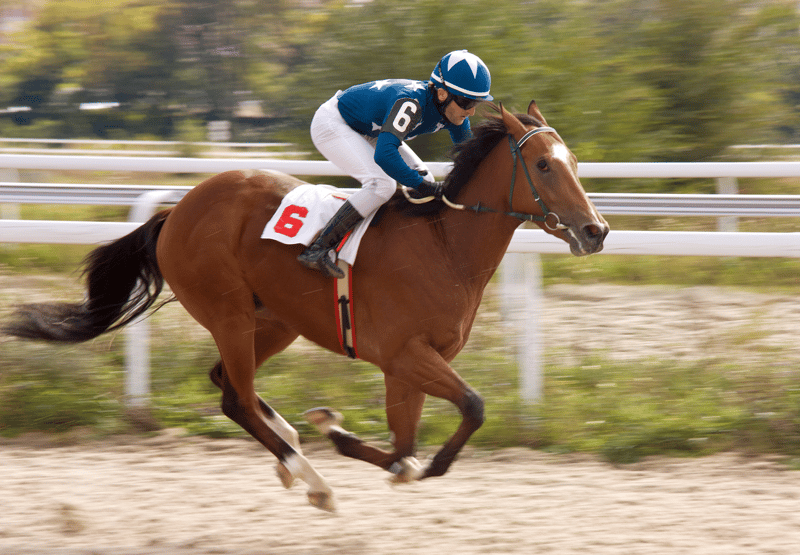
So when you wonder “what does it mean when a horse is lame?”, know that horse lameness is one of the most common problems amongst sport performance and leisure horses. So many factors, issues, and underlying concerns can cause noticeable changes to your horse’s gait.
Identifying the cause of your horse’s lameness is critical to prevent problems from getting worse over time.
The first step in preventing horse lameness is improving the overall health of your horse. Start with the basics like good nutrition and a regular exercise plan, and incorporate equine supplements into your horse’s diet to improve their bones, muscles, and joints and keep them riding!
Consider adding TRI-ACTA or TRI-ACTA H.A. to your horse’s diet to support joint health.
TRI-ACTA H.A. for Equine
Our maximum strength formula is perfect for horses that are ageing, experiencing arthritis and stiffness, are in training and competition, or under a heavy workload.

Newsletter Signup
Subscribe to our newsletter to receive the latest news and exclusive offers.
.jpg?height=2000&name=Cliick_Integricare-DISPLAY-REVISEDV2%20(1).jpg)
Proactive & Therapeutic Joint Supplements
When given daily, Integricare joint supplements recover bone and joint injuries faster and help prevent mobility injuries from happening in the first place.

